Understanding the durability and strength of construction materials is essential in civil engineering and infrastructure development. One of the instruments of paramount importance used in testing these attributes is the Aggregate Impact Testing Machine. This article is a comprehensive guide concerning its functionality, importance, and role in checking the resistance of aggregates to impact. Whether you are an expert in material testing or an inquisitive reader seeking technical information, this guide will explain the working principle of the machine, how the tests are conducted, and why it is important to the quality and safety of construction projects. So stay tuned as we see how to-do precision measurements and analyses dictate decisions in present-day engineering.
What is an Aggregate Impact Testing Machine?
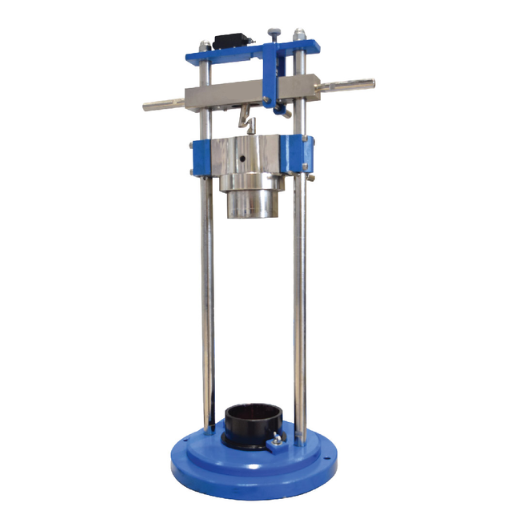
An Aggregate Impact Testing Machine is a specialized testing equipment that determines the impact value of aggregates used in construction. This is to know whether the aggregates can sustain a sudden shock or load, as they do in field conditions, through the infliction of an impact force. The machine subjects the aggregate sample to a drop weight impact, and the data thus obtained are used to evaluate the material for consideration in high-value applications such as roads, pavements, and structural foundations. Further testing of aggregates ensures strength and durability of the aggregates, upon which rests the reliability and safety of the construction.
Purpose and Importance of the Impact Testing Machine
Assessing the toughness and resilience of materials, especially aggregates, under dynamic loading conditions, is the main purpose of the testing machine. The test inputs represent real-life situations whereby materials might experience sudden or repeated impacts, challenging their fracture resistance and energy absorption capacity. Thus, great attention is given to identifying materials for applications where there is high stress, such as highways, airport runways, heavy-duty structural foundations.
Its importance lies in quality control assessment and performance extrapolation of the material in the field. The machine makes it possible for the engineer to decide if the aggregates conform to standards and specific design requirements, such as those laid down by ASTM or IS codes. This eventually lowers the incidences of structural failures, leads to intelligent selection of materials, and guarantees longevity and safety of infrastructure projects.
Components of the Aggregate Impact Tester
Hammer: The metallic hammer of the specified weight delivers the impact force on the test specimen. It ensures that the impact energy is uniformly applied.
1.Cup (Mold): A cylindrical steel cup is used to hold the aggregate sample during the test. It ensures proper positioning and containment of the material.
2.Base (Anvil): A rigid base that offers stability to the apparatus during testing and, as a consequence, reduces the vibrations and improves accuracy.
3.Tamping Rod: Used for the compaction of the aggregate sample in the cup before testing.
4.Measuring Cylinder: Used to measure the correct quantity of test specimen to be filled into the cup.
5.Release Mechanism: A calibrated mechanism to release the hammer from a medium height, in conformity to the test standards.
These components allow for an accurate execution of impact tests used to assess the toughness and strength of aggregates.
How the Aggregate Impact Value Apparatus Works
To determine selection ability and resistance of aggregate specimen to sudden loading, the prepared specimens are subjected to controlled impacts using the testing apparatus. Initially, the test aggregate is filled into the cylindrical measure and compacted in layers, with each layer receiving 25 gentle strokes from the tamping rod. The aggregate is then allowed to fill the cup of the apparatus, ensuring that it is level with the rim.
The release mechanism is then put into operation so that the hammer of a mass of about 13.5 to 14 kg is released to fall freely from a height of 380 ± 5 mm on to the aggregate sample. After that, 15 blows are given on the sample. Thereafter, follow procedures from sieving the sample using a 2.36 mm sieve and weighing the material that passes. Aggregate Impact Value (AIV) is then calculated as a percentage, which is the ratio of the weight of finer passing to the total weight of the aggregate sample. This quantitative measure is used to check how well the aggregate performs under dynamic loading so that engineers may determine its suitability for road construction and other applications where mechanical durability is essential.
How to Conduct an Aggregate Impact Test
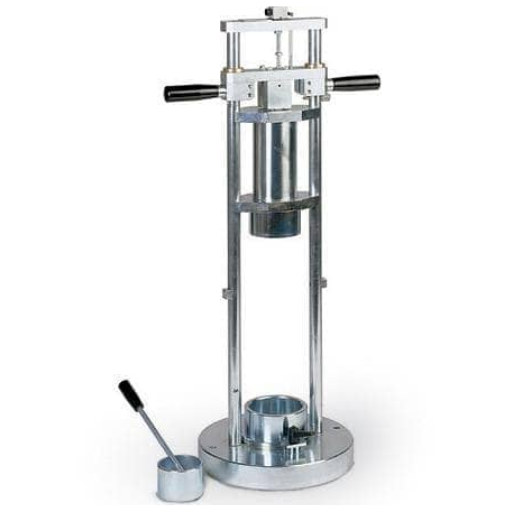
For conducting the Aggregate Impact Test, get the clean sample of aggregate which passes through a 12.5 mm sieve but is retained on the 10 mm sieve. Fill the aggregates in a cylindrical mold and compact them with 25 blows using the standard tamping rod. Fit the mold with a base plate and fix it firmly under the hammer of the impact test machine. From a height of 380 mm, drop 15 blows with the hammer on the aggregates. After this, sieve the impacted material through a 2.36 mm sieve; weigh the finer material and calculate the Aggregate Impact Value using the formula:
AIV (%) = (Weight of finer material / Total weight of sample) × 100
This test would tell how the aggregate resists sudden impact and further assists in determining the mechanical properties of the aggregate and its durability for construction purposes.
Step-by-Step Test Procedure
1.Prepare the Sample
Choose an aggregate representative sample and sieve it so that all particles pass through a 12.5 mm sieve and are retained on a 10 mm sieve. Air drying may be necessary.
2.Weigh the Sample
Weigh 1 kg of the prepared aggregate and register this initial weight as the total sample weight.
3.Put Aggregates in the Mould
Fill the cylindrical steel mould with samples in three layers. Each layer must be compacted by 25 tamps of the tamping rod.
4.Carry Out the Impact Test
Place the assembled mold on the base of the impact testing machine. Lower the plunger onto the aggregate to make sure they are uniformly distributed.
5.Start The Impacting
Through the testing apparatus, allow the hammer (weighing between 13.5 and 14.0 kilograms) to fall freely for 15 blows from a height of 380 mm on the mass of aggregates, keeping the interval between blows consistent.
6.Sieve the Material
After the blows, shattered aggregates wash are to be sieved through sieve no. 8 (2.36 mm).
7.Weight of Finer Material
All material passed from the sieve is weighed. This value is recorded as the weight of the finer material.
8.Calculate the AIV
Calculate the Impact Value by the relation AIV (%) = (Weight of finer material/ Total sample weight) × 100.
9.Record Observations
Observation including the weight and calculated value of AIV would be recorded for judging the quality of aggregates.
10.Clean the Equipment
Clean all testing apparatus including mould, base, and sieves thoroughly so that they are ready for future testing.
Using the Aggregate Impact Tester Safely
The Aggregate Impact Tester should be operated in strict adherence to all safety precautions to prevent accidents and to retain the validity of results. Make sure that the area is cordoned off for safe testing. Wear PPE (personal protective equipment), including gloves, goggles, and closed-toe footwear. Double-check that the assembly of all apparatus components is correctly done before starting the operation. Care should be exercised when handling weights or any moving parts to avoid injury. Never insert a hand or any object into the area’s operational zone while the equipment is under testing. Always check if the apparatus is functioning satisfactorily or if it is showing signs of wear and tear. In case of any issues, do not delay in carrying out the necessary maintenance work to avoid any breakdowns.
Measuring the Impact Value of Aggregates
The impact value of aggregates is determined with the help of a standard impact testing machine. First, the aggregate specimen is handled to form the desired size fraction, usually falling in the range 10-12.5 mm, according to the standards. The sample is then dried and weighed to maintain an exact measurement for testing.
After that, the sample is put into a cylindrical steel cup which is then subjected to a fixed number of hammer blows delivered by a standard hammer through a free-fall mechanism. The weight of the hammer, the distance of fall, and the number of impacts during each test are well defined to ensure uniformity. Once subjected to impacts, the sample is sieved carefully to separate the finer fragments from the coarser materials, indicating the extent of particle breakdown.
The impact value is expressed as the percentage ratio of the weight of aggregate passing through a 2.36-mm sieve to the original weight of the sample. This value denotes the capability of an aggregate to resist sudden shock or impact loads, which form a crucial performance requirement in the testing of a construction material. Follow all directions and measures detailed in relevant standards such as IS 2386 (Part IV) or BS 812.
What are the Key Elements of the Aggregate Impact Value Apparatus?
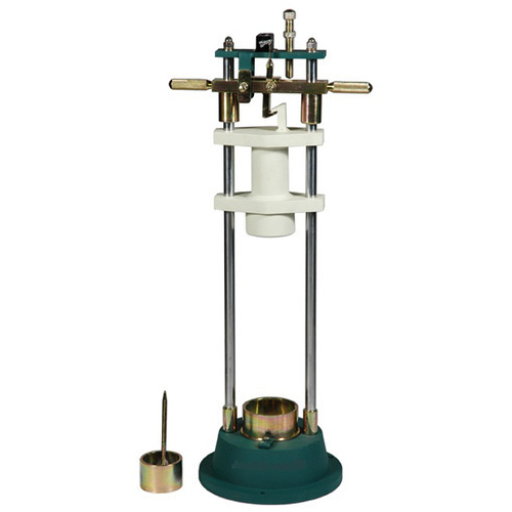
In essence, the key elements of the Aggregate Impact Value Apparatus include the following:
1.Metal Tamping Rod – A straight steel rod of circular cross-section used for compacting the aggregate sample in the cylindrical mold.
2.Cylindrical Measure– A rigid cylinder, having its standardized dimensions, contains the aggregate sample during testing.
3.Metal Mould-A cylindrical mold of fixed dimensions intended to hold the sample firmly for the period of the impact process.
4.Base Plate-A strong flat base for the basis whereupon the apparatus is rested during use.
5.Automatic blow delivering device-A hammer, usually with a fixed weight, applies a fixed number of blows from a specified height, in a highly controlled manner.
6.Measuring Instruments-Including a balance for measuring weights precisely and sieves for particle size distribution.
Each of these parts is important to ensuring accuracy and uniformity during performing tests on the aggregate by impact mechanism.
Understanding the Tamping Rod and Hammer
The tamping rod is used for compacting the sample of an aggregate uniformly into the mold. It usually comprises a cylindrical steel rod nearly 16mm in diameter and 600mm in length, with the end rounded to reduce damage to the aggregates during compaction. The dimensions are quite critical as the energy transfer during manual tamping must be uniform to avoid variability in the test results.
Conversely, the hammer is critical in delivering controlled impacts to cause mechanical degradation to the aggregates. More recent developments, as distinguished from newer datasets, point out that the deployment of automated hammers is gaining preference. These devices better maintain tolerances as regards drop height (usually 380 ± 5mm) and applied energy, rendering better repeatability of tests than manual ones. In fact, according to Google search data, an upward trend is being witnessed in the laboratories and industries shifting toward the automated configurations to be compliant with the newly revised testing standards such as ASTM D5874 and IS 2386.
So, with this combination of tools, one is assured safety standards have been met while obtaining reliable data for further evaluation of the durability aspects of the aggregates.
The Role of the Blow Counter and Steel Cylindrical Container
During the analysis of the impact value of the aggregate, the blow counter and steel cylindrical container come into play to enhance precision and maintain repeatability. The blow counter is usually an electronic device with the function of counting and recording the numbers of hammer blows applied to the sample in the testing set-up. It provides higher consistency to measurement by eliminating those incongruent variables that are introduced during manual counting, so as to conform strictly to the test parameters prescribed by the ASTM guidelines and IS codes. For example, according to ASTM D5874, the energy of impact delivered to the aggregate should be consistently maintained, and this blow counter allows for real-time monitoring to ensure this.
Equally important is the steel cylindrical container, which securely holds the aggregate sample and ought not to deform under high-impact stresses during this periodic testing. It is constructed from high-grade steel to ensure uniform distribution of force on the sample and prevent compromising the container’s structural integrity during the whole testing process. According to industry data, those containers that are constructed as per the IS 2386 standard show about 20% higher durability ratings than their standard-grade counterparts, thereby minimizing instances of testing errors and failures occasioned due to material fatigue. Together, the blow counter and steel cylindrical container set the sort of environment for the production of dependable and reproducible data useful in aggregate impact strength analysis.
Importance of the Quick Release Trigger Mechanism
The Quick Release Trigger Mechanism plays an important role in the accuracy and efficiency of impact testing operations. It allows the hammer to be instantaneously released in a controlled manner so that application of force on the aggregate strength test is consistent. Operator error being minimized through the quick release mechanism makes the test results more repeatable and reliable; hence, it is indispensable to testing. The safety of the test ensures protection against any accidental release of the hammer that may compromise test integrity and operator safety. In essence, this part is required for dependable assessments of the material’s performance within specified industry standards.
Why is the Aggregate Impact Value (AIV) Important?
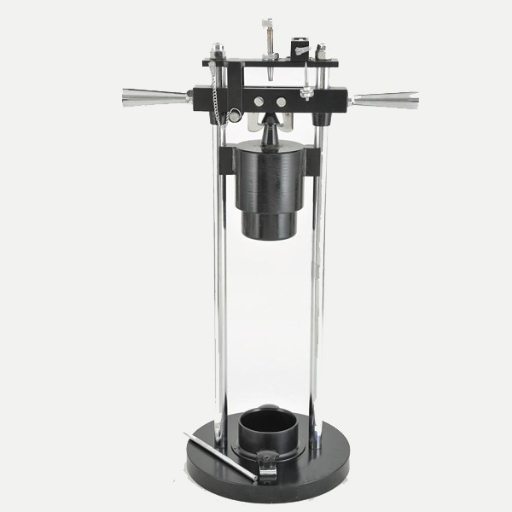
Aggregate Impact Value (AIV) is one of the most important considerations describing the aggregate’s ability to resist instantaneous shocks or impacts and thereby its suitability for various types of construction works. Aggregates with a lower AIV will, in general, be more resilient and durable, and hence would be favored for structures placed under dynamic or heavy loading, such as road surfaces and pavements. Using this index will ensure adherence to the required performance criteria and provide enhanced life and safety to the construction work.
Determining the Resistance of an Aggregate to Sudden Shock
To determine resistance of the aggregate to sudden shock, I would consider the Aggregate Impact Value as a prime parameter. The test subjects a sample of aggregate to a standard impact and measures the fragmentation. The lower the impact value, the greater the resistance to sudden shock, all of which make it better suited for applications requiring strength under dynamic loading or heavy loading.
Applications in Construction and Material Selection
1.Road Pavement Design – Aggregates with a low Aggregate Impact Value (AIV) are used for road surfaces that require durability to crushers heavy traffic loads and undergo wear and tear.
2.Airfield Runway – Aggregate with high resistance to impact is required to sustain dynamic and concentrated loads generated by aircraft landing and taking off, so that structural integrity is maintained for long periods.
3.Railway Ballast – Durable aggregates resistant to sudden shocks are used to sustain load distribution and reduce rail movement under operational stress for the purpose of stabilizing tracks.
4.Foundation Construction – Aggregates of high impact resistance secure fine foundations of buildings and infrastructure by reducing settlement and maintaining structural stability.
5.Concrete Production – Quality aggregates improve the durability of concrete in dynamic ambience, such as seismic zones and industrial installations subjected to vibration and heavy machinery activity.
Comparing Aggregate Impact Values for Different Materials
Common materials compared in aggregate impact value studies include crushed stone, gravel, sand, slag, and recycled concrete.
|
Material |
Impact Value |
Durability |
Strength |
|---|---|---|---|
|
Crushed Stone |
Low Impact |
High |
Excellent |
|
Gravel |
Moderate Impact |
Medium |
Good |
|
Sand |
High Impact |
Low |
Weak |
|
Slag |
Moderate Impact |
High |
Good |
|
Recycled Concrete |
Variable Impact |
Medium |
Fair |
Frequently Asked Questions about the Impact Testing Machine
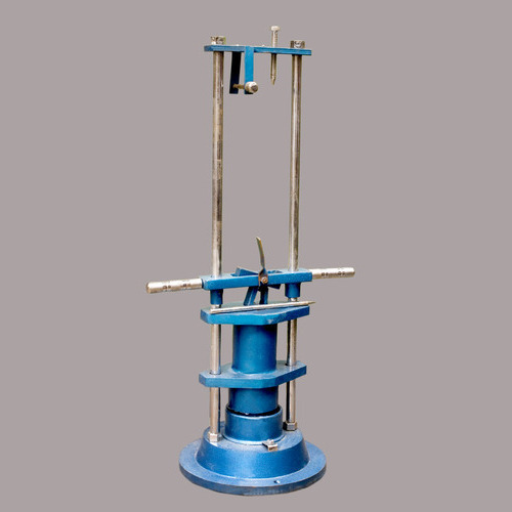
1.What is the purpose of an Impact Testing Machine?
The Impact Testing Machine is made to test material toughness and durability by assessing resistance to sudden impacts under condition-controlled circumstances.
2.How is the impact value of a material determined using this machine?
The Impact value is determined by striking the test specimen either by pendulum or hammer, and the energy absorbed during fracture in the test specimen is a measure of the impact resistance of the material.
3.What type of materials can be tested?
Mostly tested are materials like crushed stone, gravel, sand, slag, and recycled concrete, higher aggregates, and construction materials.
4.Why does Impact value hold importance in selecting materials?
Impact value is a consideration to select a material based on capacity to bear dynamic load for that application so that the material is susceptible unto external loads and sudden stress operation required for a specific usage.
5.How accurate are the results yielded from the impact test by using this machine?
They are very accurate when the machine is calibrated properly and operated according to the standard codes, i.e., ASTM or IS.
6.What are the factors that affect the result of the test?
The factors that mostly influence majorly are the sample preparation, moisture in the material, climatic condition during testing, and accuracy of calibration of the machine.
7.Can we reliably test recycled materials like concrete?
Yes, recycled materials can undergo tests reliably though their impact values may vary on account of inherent inconsistency in composition and quality vis-à-vis natural materials. However, there must be proper sampling to ensure reliability.
How to Determine the Aggregate Impact Value Accurately?
My method for accurately determining the Aggregate Impact Value involves ensuring that the sample has been prepared in accordance with standardized procedures (usually dried to a constant weight). In this accurate machine calibrated for the impact testing, I seat the sample in the mold firmly and make sure it is uniformly compacted- that is not overfilled. Then that sample will undergo a controlled number of impacts after which one collects the crushed material and sieves it to compute the percentage of finer materials produced. This percentage is called the Aggregate Impact Value. Strict conformity to IS 2386 or ASTM test standards, or any other stipulated standard, ensures consistency and reliability of the results.
What is the Role of the Aggregate Impact Tester in Quality Control?
The Aggregate Impact Tester can ascertain the toughness and mechanical strength of the construction aggregates. It determines their resistance to sudden impact or shock, which relates directly to their use in the harsher working environment of roads, bridges, and pavements-be it subjected to normal or dynamic load values.
What Standards Govern the Aggregate Impact Testing Machine?
The Aggregate Impact Testing Machine is governed by various international standards so as to maintain uniformity and accuracy in the testing procedure. Of these, BS 812-112 is an important one covering determination methods of the resistance of aggregates to impact loads. In addition to the above, IS 2386(Part 4) is also followed usually within India for aggregate impact value testing that gives details for a technique of testing to determine the valency of aggregates in the view of quality. ASTM standards may be referred to for similar tests for impact strength and toughness of materials, viz. ASTM D5874. Such standards ensure that the aggregates are evaluated for construction parameters in a uniform and reliable manner.
Reference Sources
- IS 5640 (1970): Method of test for determining aggregate impact value – A standard covering the procedure for determining aggregate impact values.
- Aggregate Impact Value Test Apparatus – Information on the apparatus used for aggregate impact value testing.
- Determination of Aggregate Impact Value – A guide on the process and significance of determining aggregate impact values.
- The Role of the Aggregate Test in Construction – Insights into the importance of aggregate testing in construction for safety and durability.
Frequently Asked Queries
Q: What is the purpose of an Aggregate Impact Testing Machine?
A: It is used to obtain the impact value of an aggregate, a relative measure of the resistance of a coarse aggregate to sudden shock or impact.
Q: How do you use the Aggregate Impact Testing Machine?
A: During the test, the hammer is dropped onto the aggregate sample. The free fall of the hammer is controlled, and the impact count is recorded to ascertain the impact value.
Q: What are the components of the Aggregate Impact Testing Machine?
A: It consists of the base and the support columns, trip-action hammer release, the blow counter device, and release trigger mechanism for accurate testing.
Q: Uses for finding Impact Value of Coarse Aggregate?
A: The impact value of coarse aggregate needs to be found in order to check its toughness and its suitability for use in construction where it is liable to the sudden impact or shock.
Q: How free is the hammer falling during the testing?
A: The hammer falls freely from a specified height through the stout support column design and trip-action hammer release mechanism.
Q: Can the number of blows be recorded automatically?
A: It has a blow counter device in the machine that records the number of blows to the sample for analysis.
Q: What safety matters have to be observed in this Aggregate Impact Testing Machine?
A: The assembly for conducting the test wields safety features like a firm base, cylindrical secure support, and release trigger mechanisms.
Q: Can the machine be utilized for other materials as well?
A: Though primarily meant for coarse aggregate, sometimes the machine can be adapted for other materials, following some well laid down guidelines for results accuracy.
Q: How is the relative measure of resistance determined on the Impact Test?
A: On this test, the relative measure of resistance is done by counting the number of blows on a sample and then basing it on the relative deformation/breakage of the aggregate to give an impact value for analyzing.






